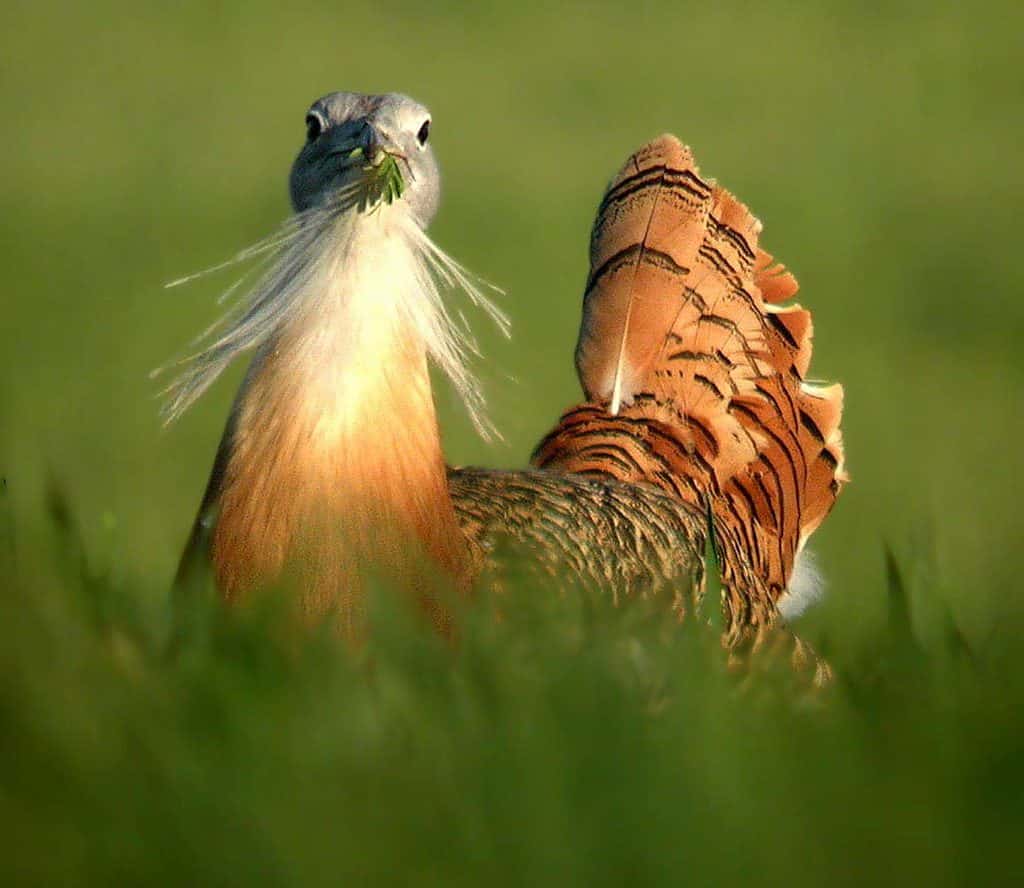Self-medication in animals would have once seemed like a crazy idea, but now, researchers have spotted several instances where it seems to be happening. Dolphins have been spotted rubbing against corals and chimpanzees applying insects to their wounds. Now, researchers were able to confirm self-medication behavior in a specific type of bird.

The great bustard (Otis tarda) is a massive and colorful bird that can be found in parts of Europe, Africa, and Asia. They are listed as vulnerable by the Union of Conservation of Nature (IUCN), with 70% of the world’s population living in the Iberian Peninsula. They walk with an upright stance and fly with powerful and regular wing beats.
A group of researchers in Spain collected over 600 droppings from male and female great bustards and counted the abundance of recognizable remains of plant species that are grown locally and are known to be on the birds’ menu. As it turns out, the two species of plants that were eaten more than other foods in the diet had antiparasitic effects.
“Great bustards seek out two species of weeds that are also used by humans in traditional medicine. We show that both contain antiprotozoal and nematicidal (ie, worm-killing) compounds, while the second also contains antifungal agents,” Azucena Gonzalez-Coloma, a Spanish researcher and study co-author, said in a statement.
A nutritive and healthy diet
By analyzing the dropping, the researchers found the birds ate corn poppies (Papaver rhoeas) and purple viper’s bugloss (Echium plantagineum). The first one is used in traditional medicine as a pain reliever and immune booster, while the second one is toxic for humans if eaten in large quantities. They also have a large nutritional value.
These plants are eaten by the great bustards, especially during the mating season, which researchers believe was to block the effects of increased exposure to parasites during that time. These birds are known as lek breeders, which means males put on a display for the visiting females, who then choose a mate based on the quality of the show.
“Great bustards select corn poppies and purple viper’s bugloss mainly in the mating season, in April, when their energy expenditure is greatest. And males, who during these months spend much of their time and energy budgets on sexual display, prefer them more than females,” Luis Bautista-Sopelana, study co-author, said in a statement.
The researchers isolated water- and fat-soluble compounds from both species and determined their chemical identity. They focused on lipids, essential oils, and alkaloids, produced by plants as a defense against herbivores. They then tested the activity of the isolated molecular fractions against three common parasites that usually affect birds.
As it turns out, the extract of both plants was very effective at inhibiting or killing two of these parasites (protozoon Trichomonas gallinae and the nematode Meloidogyne javanica), while the purple viper’s bugloss was moderately active against the fungus Aspergillus niger. However, the researchers cautioned more research is still needed.
“The ultimate proof of self-medication requires experimental protocols developed in the biomedical, veterinary, and pharmacological sciences,” said Bautista-Sopelana. “Until then, we continue with our fieldwork.”
The study was published in the journal Frontiers in Ecology and Evolution.






